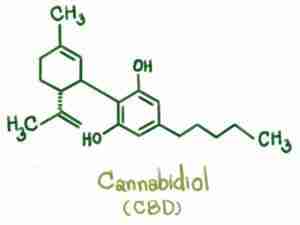Cool off, What is Heatstroke in Dogs?
What is Heatstroke?
Hyperthermia or increased body temperature can be divided into 2 types, Pyrogenic Hyperthermia (a fancy word for fever) or Nonpyrogenic Hyperthermia (a fancy word for not-fever). Heatstroke is the cause and effect of the body being unable to self-dissipate heat and falls under the category of Nonpyrogenic Hyperthermia.
Dogs are considered to have heatstroke when their temperature exceeds 105.5F degrees and is not caused by a fever. What most of us don’t know is that external and internal influences can bring on this condition. The most common external influence leading to heatstroke is heat and humidity, but did you know that heat stroke can also happen when your dog has ingested toxins or dealing with illness?
Risks for developing Heatstroke in dogs
Depending on the breed and age of your dog, their risk of heatstroke can be increased. Older dogs and smushy-faced breeds are naturally predisposed to heatstroke. Older pups may have other health ailments that complicate their ability to regulate their temperature.
Smushy-faced or brachycephalic breeds like Bulldogs, Frenchies, Pugs, and Mastiffs can have compromised airways due to the purposeful breeding of a compressed (smushy) face.
Here are the most common causes of Heatstroke in dogs:
Environmental Threats:
- Outdoor temperatures above 80 degrees F
- Humidity above 75%
- Lack of drinkable water
- Lack of shade
- Poorly-groomed coat
- Wearing doggie clothes
- Toxins
Internal Threats:
- Epilepsy
- Shortened airway (brachycephalic)
- Decreased lung capacity
- Cancer
- Electrolyte abnormalities
- Obesity
So how do dogs stay cool?
The primary way dogs dissipate heat is thru panting, yup that tongue is not just for slurps! Since dogs don’t efficiently sweat, they use their tongue to evaporate water from the surface allowing the blood below the surface to cool as it passes by. Panting also increases evaporation from the lungs and when humidity is above 80% evaporative cooling becomes non-existent.
Dogs will also seek out a cool place to lay, this allows them to practice conduction or passing the heat from one object to the other. If your dog is having a seizure or muscle tremors they will not be able to move to a cool spot and may not be able to pant, this leads to continued heating.
What happens to the body during Heatstroke?
When a dog’s body becomes overheated an avalanche of problems can happen inside and outside the body. When the body temp increases by 2*F above normal (103.5) the thermoregulatory center triggers a reaction.
First, the body decreases blood flow to the kidneys and spleen, increases the heart rate, and then dilates the blood vessels near the skin to attempt rapid cooling. As the body tries to mitigate cooling the dilation of the blood vessels on the surface cause a drop in blood pressure, at this point you may begin to see weakness or disorientation.
To compensate, the body then constricts the blood vessels raising blood pressure, if medical attention is not initiated the deadly cycle begins.
As the body competes to regulate temperature it begins fighting dehydration, muscle exhaustion, decreased cardiac output, and once again low blood pressure. Eventually, the kidneys begin to fail and cardiac edema emerges, the body is failing. Once temperatures reach 108.5 F the body goes into multi-organ damage leading to seizures, uncontrolled bleeding, and eventual death.
This can happen in 30 minutes without intervention.
Catch the signs before it’s too late – signs of heatstroke in dogs
There are two stages of heat stress in dogs: heat exhaustion and heatstroke.
In heat exhaustion the dog’s temp will be in the range of 103.5-105.5, this range is generally not deadly as long as active cooling begins. When dogs start to experience heat exhaustion they will exhibit rapid panting, intolerance to exercise, drooling and cool spot seeking. If conditions do not change for the dog they will elevate past the 105.6F range and we are now in the danger zone (Topgun anyone?).
Once in the danger zone dogs will begin to exhibit weakness, vomiting, diarrhea, collapse, and seizures as the crisis progresses. If the condition reaches the danger zone emergency medical attention is needed to survive.
Help, I need a doctor!
Because you are an amazing dog parent you are on your way to the vet, here’s what to expect.
You should always call your veterinarian on the way so the emergency team can be ready to jump into save mode. Once you arrive your pet will likely be brought to the treatment area on a stretcher or cart. The emergency team will usually ask you to stay up front so they can work on your family member without distraction, yes they know you are scared. Your dog will receive IV fluids, cooling baths, oxygen, and life-saving medications all within 2-3 min, the vet team is doing a great job.
Once the doctor gives the orders for treatment they will come and speak to you, this can take 10-15 min. They will ask you what happened (please be honest), and if your dog is sick enough they will ask you if you would like CPR should they go into cardiac arrest.
I know what you thinking, does that mean they are going to die? In most cases no, but if your veterinary team has any chance of saving your friend they want to be ready without having to find you because you ran to the bathroom..seconds matter.
Once the medical team has a grasp on the situation you will be presented with an estimate for continued care..take a deep breath. The timeframe for hospitalization can be as little as 2 days and up to 2 weeks. The good news is if you caught it early and sought quick medical attention even the bad cases are usually treatable.

Follow these tips to help prevent heatstroke in dogs:
🐾 Older dogs are less able to deal with exercise in hot weather, so best to keep them cool inside.
🐾 It takes an avg. of 60 days for a dog to get acclimated to warmer temps. So when it gets hot quickly, they may not be ready.
🐾 Dogs with flat smooshy faces are extremely prone to heatstroke and should always avoid hot temps.
🐾 When the temp is above 80 degrees it is recommended to avoid exercise in the great outdoors.
🐾 If your dog seems too hot, slow cooling is best, think air-conditioned car or building. Avoid soaking with cold water as this can increase the chance of making the heatstroke worse.
🐾 Always provide cool water breaks for you and your pup.
🐾 If you are out in the elements and your furry friend becomes tired, pants uncontrollably, or seems weak or disoriented it is time to seek emergency help!!
🐾 Don’t leave your dog in the car when temps are greater than 73F
🐾 If your dog ingested a toxin, bring the package with you to the vet
🐾 Drive safely to the vet, you are of no help if you get in an accident.
Remember an ounce of prevention is worth a pound of cure. Keeping your pets safe from the elements and toxins can save their life. If your pet has medical or breed conditions you are probably aware of the dangers that go along with the issues, but if not talk to your vet for helpful answers.
Although we cannot help directly with emergent heatstroke in dogs, we may help with conditions that can lead up to heatstroke in dogs. Help keep your dog well and active through the years with our Hemp Signature Blend.
Read more about how our Hemp Signature Blend will help your dog today.
www.todaysveterinarypractice.com
https://www.iowaveterinaryspecialties.com/student-scholars/canine-heat-stroke-literature-review










